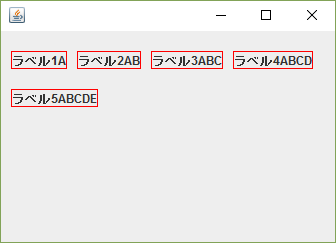

Without writing some code, I honestly have no idea what LEADING and TRAILING actually do. TRAILING - each row of components should be justified to the trailing edge of the container's orientation, for example, to the right in left-to-right orientations LEADING - each row of components should be justified to the leading edge of the container's orientation, for example, to the left in left-to-right orientations

After that set left alignment of components which are already arranged vertically using Component. JFrame frame new JFrame() frame.getContentPane().setLayout(new BoxLayout(frame.getContentPane(), BoxLayout.YAXIS)) Now, create a Panel and add some buttons to it. RIGHT - each row of components should be right-justified To align components vertically, use the BoxLayout. To specify that the row is to aligned either to the left or right. The items are packed in their default position. The FlowLayout class provides a very simple layout manager that is used, by default. The flow direction is determined by the container's componentOrientation property and may be one of two values: ComponentOrientation.LEFTTORIGHT ComponentOrientation. LEFT - each row of components should be left-justifiedĬENTER - each row of components should be centered The items are packed flush to each other in the center of the alignment container along the cross axis. A flow layout arranges components in a directional left-to-right flow, much like lines of text in a paragraph. Here are the definitions for those align properties from the FlowLayout Javadoc: Here’s what the FlowLayout constructor arguments look like:įlowLayout(int align, int horizontalSpacing, int verticalSpacing)
#Flowlayout left justify how to
This code shows how to create a Java FlowLayout that flows left and has horizontal spacing of ten pixels and vertical spacing of five pixels:įlowLayout flowLayout = new FlowLayout(FlowLayout.LEFT, 10, 5)


 0 kommentar(er)
0 kommentar(er)
